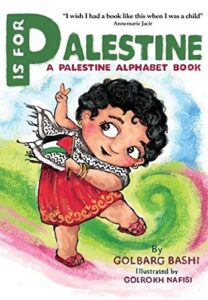Reviewed by Marjorie Gann/May 4, 2023
 Picture books are the first step to literacy. Written for ages one to six, they progress from tactile board books for touching, to concept books for counting and colors, then on to stories. Informational picture books feature fish, frogs, puppies, plants and people, nursery rhyme books impart a love of sound and rhythm, and fantasies like Maurice Sendak’s Where the Wild Things Are induct the toddler into imaginary realms. Reading a good picture book aloud is a dual delight, for child and adult.
Picture books are the first step to literacy. Written for ages one to six, they progress from tactile board books for touching, to concept books for counting and colors, then on to stories. Informational picture books feature fish, frogs, puppies, plants and people, nursery rhyme books impart a love of sound and rhythm, and fantasies like Maurice Sendak’s Where the Wild Things Are induct the toddler into imaginary realms. Reading a good picture book aloud is a dual delight, for child and adult.
Yet if you step into a children’s library these days, you’re as likely to bump up against titles like Ibram X. Kendi’s Anti-Racist Baby or Innosanto Nogara’s A is for Activist – books designed to indoctrinate rather than entertain. Authentically multiracial children’s books evolved gradually, and then exponentially, from the moment Ezra Jack Keats, a New York Jew, broke the color barrier in American children’s literature in 1962 with The Snowy Day. Unlike Kendi’s and Nogara’s books, Keats’s text didn’t preach at the young reader; it simply assumed that it should be as natural for a book to tell the story of a black child as of a white one. It’s the closely-observed child’s-eye view of the first snow that makes Snowy Day a masterpiece, not Peter’s dark skin.
Unfortunately, there is nothing natural about the content of recent picture books telling stories about the land the authors call Palestine to young readers. These books indoctrinate and preach, heavy-handedly and deceptively.
In 2018, controversy broke out in Highland Park, New Jersey, over a scheduled library reading of P is for Palestine by Iranian-Swedish-American author Golbarg Bashi.[i] Members of the town’s Jewish community pointed to problematic passages within Bashi’s book. Selecting an object, custom or artifact from Palestinian culture, the author walks young readers through the alphabet. The selection for the letter I, for example, reads, “I is for Intifada.” Illustrated by a man and child making the V for victory sign, the text continues, “I is for Intifada, Intifada is Arabic for rising up for what is right, if you are a kid or a grownup.” But the Palestinians who “rose up for what is right” in the Second Intifada weren’t performing a Middle Eastern version of the 1965 Selma to Montgomery march; theirs was a violent uprising targeting innocent Israeli civilians. They murdered over 1000 of them, maiming and injuring many more.
For the letter H, the book offers “H is for Handala,” a symbol less familiar to North Americans. “Hear his hellos,” the text goes on, “he is our hero.” The image of “Handala” was created by Palestinian cartoonist Naji Al-Ali. In Al-Ali’s own words, “Handala was born ten years old, and he will always be ten years old. At that age, I left my homeland, and when he returns, Handala will still be ten, and then he will start growing up. . . Things will become normal again when the homeland returns.”[ii] Handala has been adopted as the symbol of the anti-Semitic BDS movement.
A few letters further, we encounter “M is for Miftah, Key of Return . . . Mama’s Mama, and my Jiddah’s Mama’s, for which I yearn.” To angry Palestinians, the key symbolizes the loss of their homes, to which they claim a “right of return” that doesn’t exist under international law.[iii] (To angry readers, being forced to read such clunky poetry is one more outrage.)
Why would a children’s author lean on all these negatives to affirm Palestinian identity? Perhaps because P is for Palestine is less about Palestinian identity than it is about propaganda. But propaganda doesn’t make for good children’s literature, which is what public libraries should promote.
[i] The reading was postponed over security concerns, though finally held on the eve of a Jewish holiday. Few people attended.
[ii] See “Who Is Handala?” Al-Ali’s own account of the birth of Handala at handala.org/handala
[iii] In the article, “Peter Beinart in NYT: Root Cause of Gaza War is Israel’s Creation,” Honest Reporting demonstrates the double standard for counting Palestinian refugees: “[T]he United Nations treats Palestinians differently from the rest of the world’s refugees. Palestinians are under the auspices of UNRWA, an entity created uniquely for them that has transformed the concept of refugee into an inherited characteristic. As a result, UNRWA today counts four generations of Palestinians as “refugees” — more than 5 million people. This totally new definition is not supported by international law. And while in every other conflict around the world, refugee populations decrease over time, the number of Palestinian refugees has continued to rise – a phenomenon that has been weaponized against Israel. In fact, according to US government estimates, less than 200,000 Palestinian refugees from the 1948 War of Independence are still alive.” See https://honestreporting.com/new-york-times-peter-beinart-root-cause-of-gaza-war-is-israels-creation/

 Education Institute
Education Institute
